








The magazine of the art-form of the photo-essay
“A free, really high quality photo-essay magazine. Fabulous!”
Stephen Fry. British actor, writer and film & documentary maker

Nov2015 back issue



by Steven Saphore


Revered for its rich native culture and diverse array of unique ecosystems, North Stradbroke Island is a picturesque
landmass off the East-Coast of Australia and currently one of Queensland’s leading tourist attractions. However, the
true history of ‘Minjerribah’ (as it was called by it's original inhabitants, the Quandamooka Aboriginals, for over 20,000
years) stems farther back in time than we may ever know.
200 years after the European colonisation of Australia, Infrared Photographer Steven Saphore & Australian musician
Kuya Howler embark on an ethereal exploration of Minjerribah with a focus on the eradicated Aboriginal culture and
the lush environments they formed deep spiritual connections with over the course of several thousand years.
Acting as a viewing portal to a transcendent plane of reality, infrared photography vividly conjures Aboriginal notions
of spiritual energy and Dream-time lore by rendering vegetation with a glowing white luminosity and the sky as a
deeply detailed canvas befitting of impressionistic art.
Kuya Howler channels the atmosphere, feelings and purpose of the original custodians of this land using music as
a mutual point of expression between the contrasting language and culture of our eras. The result is a cross-spectrum
trip across North Stradbroke Island through varying dimensions of time and electromagnetic energy.
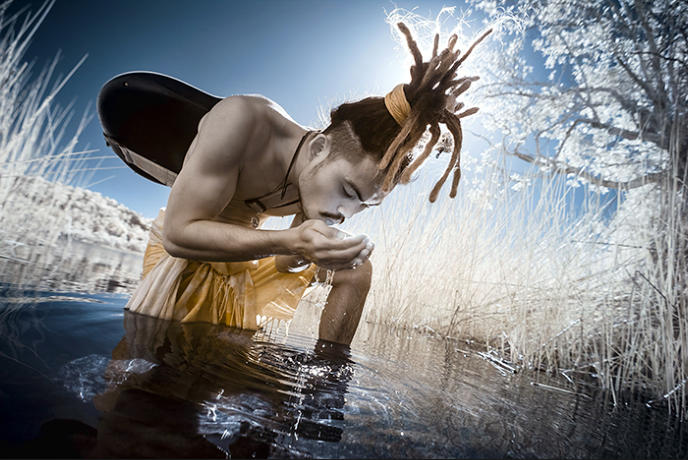
Bumeira A.K.A. Brown Lake
Kuya Howler extracts inspiration from ‘Bumeira’, Stradbroke Island, Australia. The water of Brown Lake is stained with
a unique reddish-brown color due to extraction of the tannin pigment from the fallen leaves of tea-trees and paperbarks
growing along the banks.
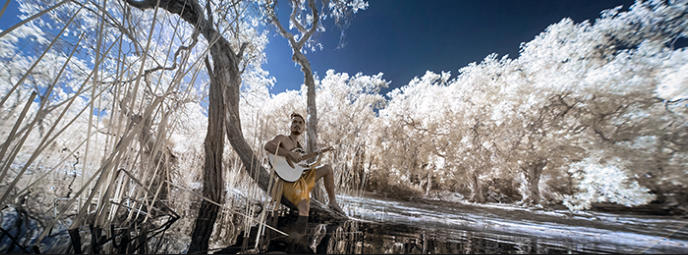
Bumeira Lake Monster
Traditionally restricted to women only, Aboriginal lore tells of a lake monster waiting for any men who swim too far from
the shores of Brown lake.
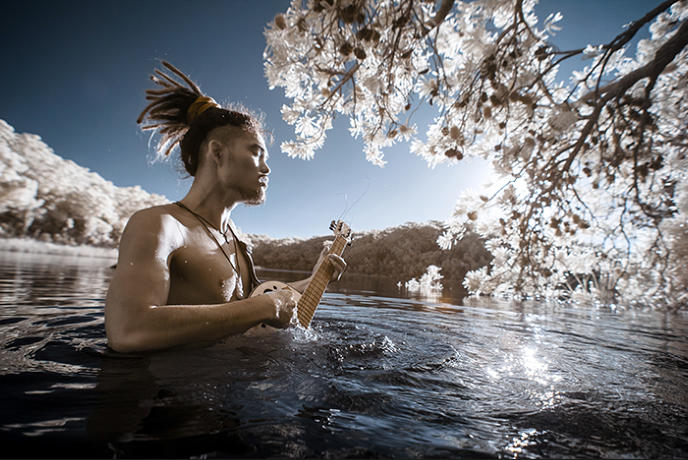
Naree Budjong Djara National Park: Blue Lake A.K.A. Karboora
The muted strumming of Kuya Howler's submerged guitar resonates throughout the 7000 year old waters of Blue Lake.
A layer of dead vegetation on the lake bed forms an impermeable layer that has retained this body of water for several
millennia. This sacred place is known to the Quandamooka Aboriginal people as 'Karboora', meaning 'deep, silent pool'.
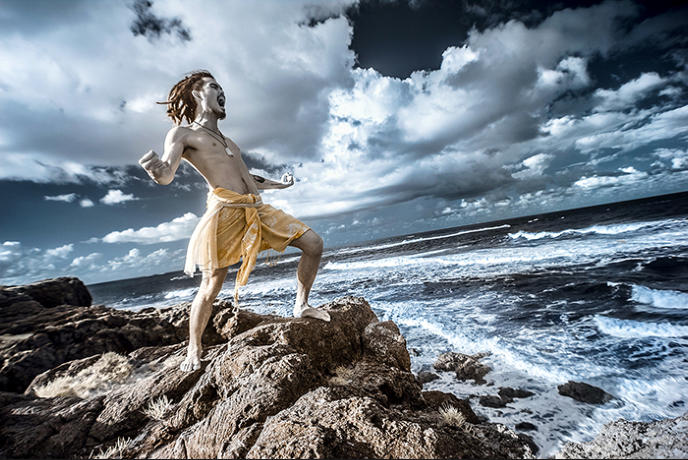
Deadman’s Beach
Howling on the cliffs of aptly named, Deadman’s beach. As a means to regulate the temperature of the Earth, the
atmosphere absorbs incoming infrared radiation from space giving skies a dark appearance during the day. Even
though Kuya may appear to traverse a phantasmal realm, what you see before you is, in fact, a scientifically accurate
depiction of reality.
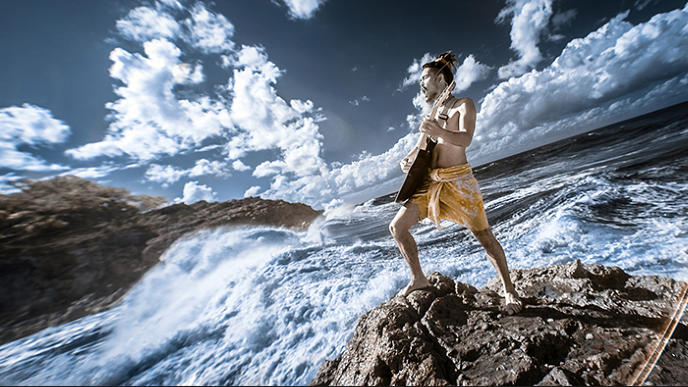
North Gorge
Kuya Howler sings before the crashing waves of Point Lookout's North Gorge. The name ‘Quandamooka’ translates to
‘Moreton Bay’, a bay situated off the East Coast of Brisbane that is home to 360 islands including Minjerribah.
Quandamooka people can be considered ‘people of the bay’.
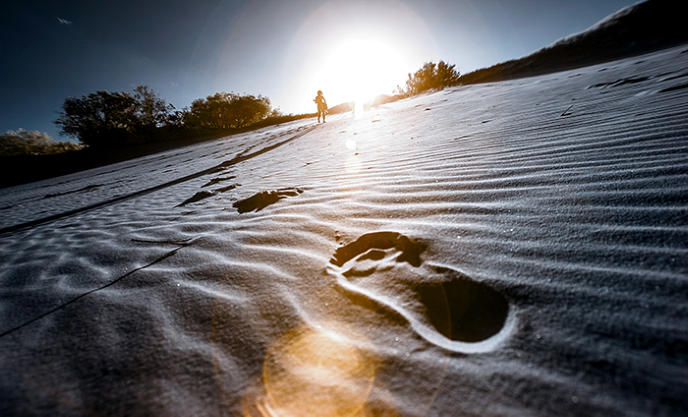
Footprints In The Sand
Stradbroke Island, originally known as Minjerribah to the Quandamooka aboriginal people, is well known for it's
diverse array of unique ecosystems all within what some consider walking distance of each other. Australian musician,
Kuya Howler, leaves his footprints in the ever changing sand dunes of Point Lookout.
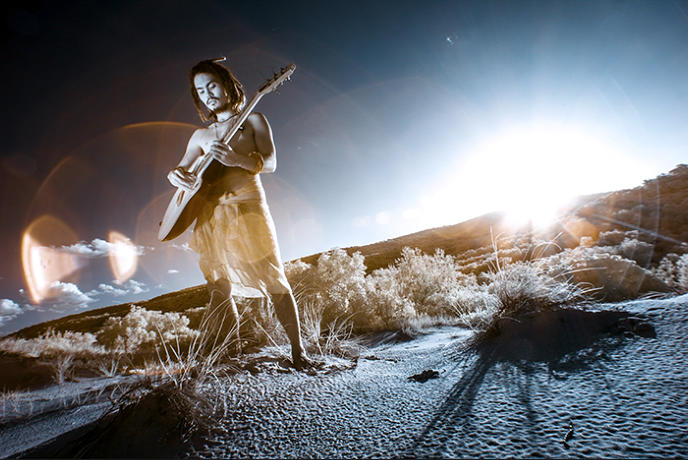
Sunset Song
Kuya Howler plays the sunset song on the sand dunes of Point Lookout, Stradbroke Island.
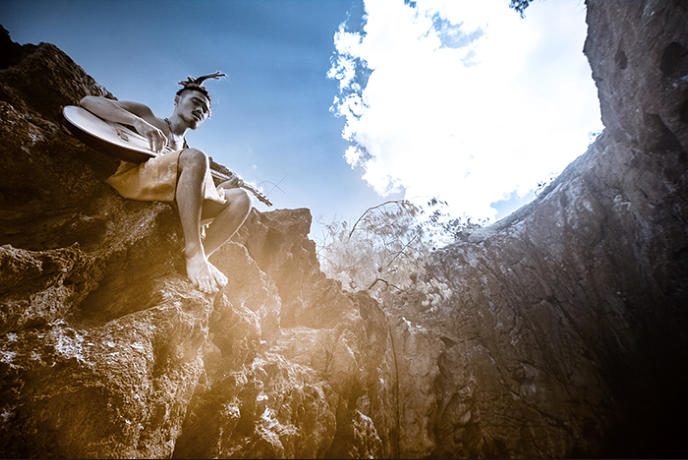
Rocks & Reverb
Kuya Howler utilizes the acoustics of a karst alcove to produce a natural reverberation on his voice and guitar. Many
musical performances would have taken place along this coast over several millennia.
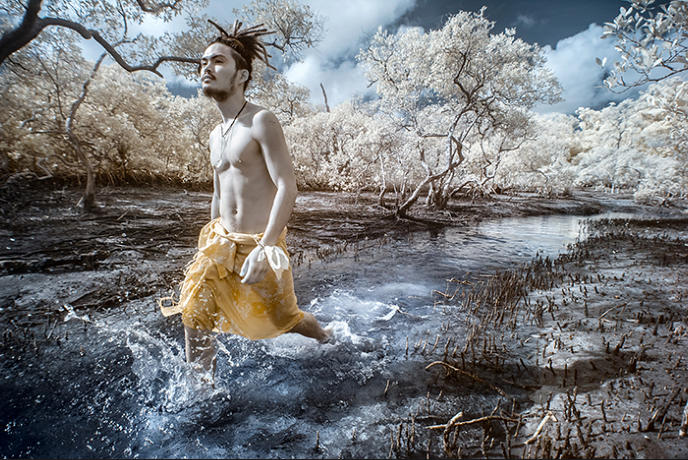
A Walk Through Myora Springs
Australian Musician Kuya Howler takes a walk through Myora Springs, a unique wetland environment found on
Stradbroke Island where a freshwater spring meets the salty pacific ocean in the form of a stream that snakes through
a lush mangrove swamp.
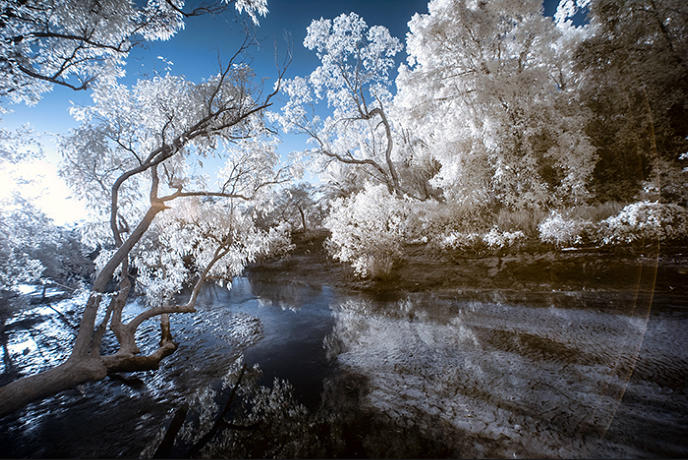
Flora & Fauna
The diverse array of unique flora & fauna found at Myora Springs made it a popular camping/gathering spot since time
immemorial for the Quandamooka Aboriginal people.
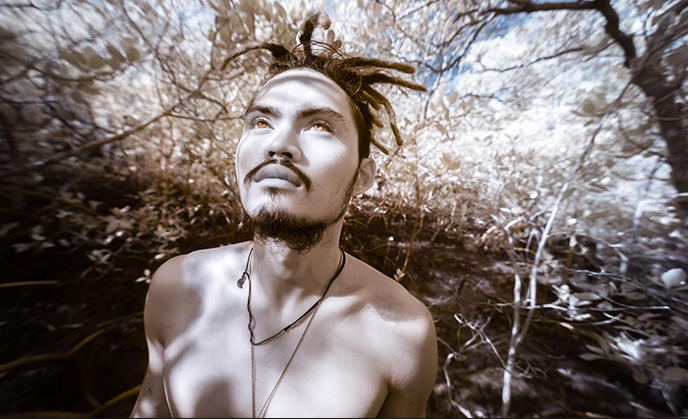
HaShem’s Rays
Kuya Howler’s complexion transforms in a spectacular shade of grey in the presence of infrared light. As the skin
coloring pigment known as melanin developed in the human body as a means of protection against harmful rays of
ultraviolet light, infrared light is able to pass through such pigmentation unobstructed as if it were never there, even to
the point of revealing vascular systems beneath the surface of the skin. Most races lose their respective skin colors in
lieu of a translucent epidermis, leaving only aspects such as facial features to determine ethnicity.
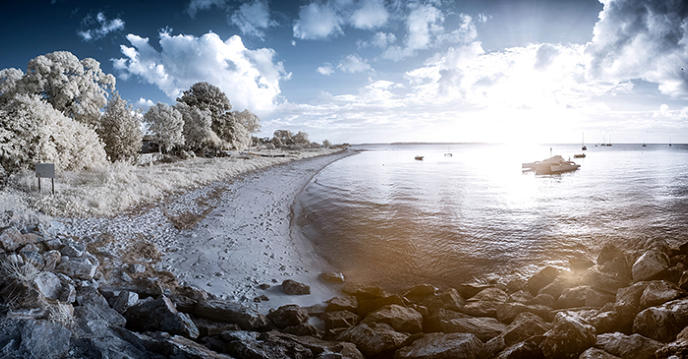
Dunwich Harbor
The township of Dunwich on Stradbroke Island was first established as a port in 1827. Today it is home to approx. 900
locals and a hub for tourists visiting the island. The colonization of Australia by European settlers just over 200 years
ago represents nothing more than a blip in the chronology of human existence, yet in that same time period, they
managed to all but eradicate an intricate culture 50,000 years in the making.
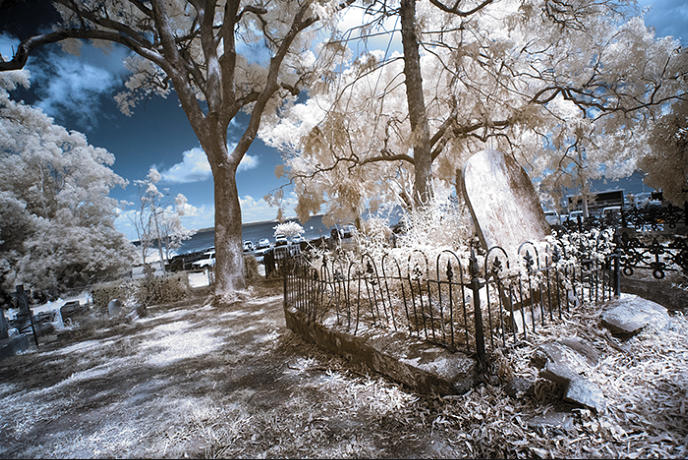
Dunwich Cemetery
By the end of the 19th century, Dunwich was home to a quarantine station, leper colony and a Benevolent asylum.
Upon arriving on the island, one exits the ferry into one of Australia’s oldest graveyards where 10,000 people (mostly
inmates from the asylum) are buried in unmarked graves.
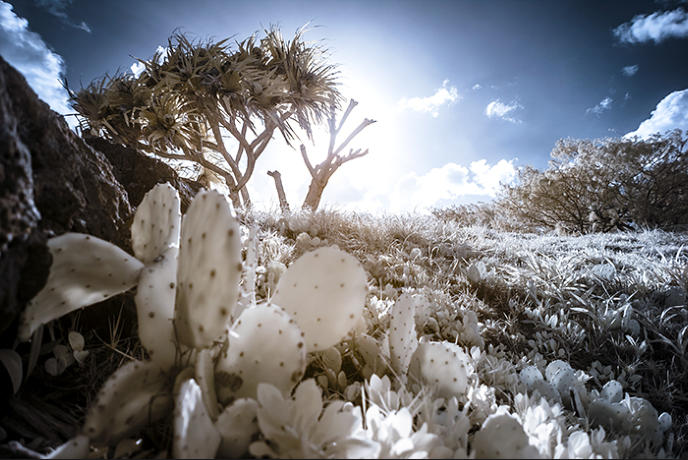
Cactinfrared
Wild cacti growing near a beach in Point Lookout. Infrared photography was initially developed in part as a tool to
assess factors like vegetative health. Chlorophyll found in plants only need energy from the spectrum of visible light to
carry out the vital process of photosynthesis so vegetation will reflect infrared light brightly like fallen snow. Brighter
vegetation means a stronger presence of chlorophyll and thus, a healthier plant.
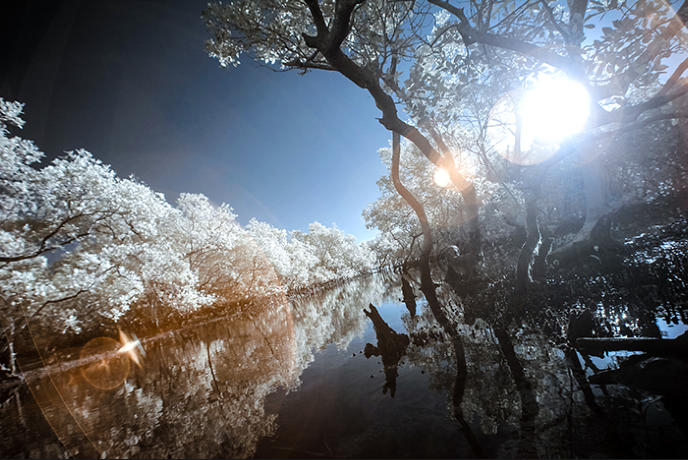
Mangrove Symmetry
This journey was documented in the perspective-shattering spectrum of near-infrared light in part to highlight the
fragility of such ecosystems to destructive practices currently taking place on the island, such as sand mining. While
places like Myora Springs (Above), Blue Lake and Brown Lake currently remain in pristine conditions as indicated by
the glowing vegetation, experts are already finding evidence of irreversible damage to these unique ecosystems as a
direct result of Sibelco's nearby Yarraman sand mine.





